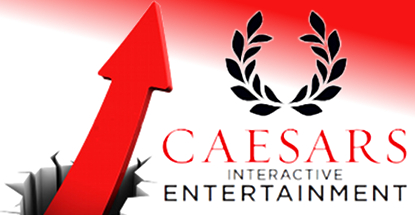 The company that controls online gambling and social gaming operator Caesars Interactive Entertainment (CIE) reported record revenue in Q2.
The company that controls online gambling and social gaming operator Caesars Interactive Entertainment (CIE) reported record revenue in Q2.
Caesars Acquisition Company (CACQ) reported revenue up 31.3% to $576.2m in the three months ending June 30. Profit soared to $37m compared to just $10.5m in the same period last year.
Just so we’re clear, CACQ was created to hold a controlling interest in Caesars Growth Partners (CGP), which was itself spun off from casino operator Caesars Entertainment Corp (CEC) in 2013 during CEC’s legally sketchy asset transfers. Now, if everyone’s up to speed on the acronyms, we can continue.
CIE’s revenue for the quarter rose 28.8% to $188.2m, leading to a $39.2m profit compared to a $1.8m loss in Q2 2014. The gains came primarily from CIE’s social and mobile games business, which rose 30.5% to $175.4m thanks to what CIE called a new focus on monetization and conversion.
While the ranks of social and mobile daily and monthly active users posted respectable gains, the critical category of average monthly unique payers was up nearly 48% to 796k, representing 4.4% of average monthly unique users (roughly three times social gaming rival Zynga’s conversion rate). Average revenue per user rose 5¢ to 31¢.
By contrast, CIE’s real-money online gambling business in New Jersey and Nevada – which CIE lumps in with the World Series of Poker brand’s business – reported revenue of just $10.8m, up a mere 5.8% year-on-year.
CGP also comprises several brick-and-mortar casino operations in Las Vegas including Bally’s, The Cromwell, the LINQ Hotel & Casino, plus Harrah’s New Orleans and Horseshoe Baltimore. Brick-and-mortar revenue was up 32.6% to $390.6m, while adjusted earnings rose 47.9% to $98.5m.
The B&M gains are largely the result of The Cromwell having only opened in May of last year, while Horseshoe Baltimore didn’t open until August 2014. The effects of a full quarter’s contributions from both properties helped offset a decline at Harrah’s New Orleans, which was hit with a smoking ban in April of this year.
CGP’s future as a standalone entity remains unknown. Last December, CEC announced it planned to reabsorb CACQ once it had concluded the Chapter 11 bankruptcy proceeding of CEC’s main unit, Caesars Entertainment Operating Co (CEOC). This announcement only served to bolster accusations by CEOC’s creditors that CEC was playing fast and loose with securities law in order to shield its more profitable assets from creditors’ clutches.
But none of these grand plans will mean anything should CEC’s efforts to keep itself out of CEOC’s bankruptcy proceeding come to naught. As we speak, CEC is desperately trying to convince an Illinois court to overturn a July 22 ruling that allowed creditor lawsuits in other states to proceed.
The clock is ticking on whether CEC’s request will be granted before the courts handling those lawsuits in New York and Delaware issue their own verdicts. Should CEC be dragged into CEOC’s abyss, creditors will carve up CEC like Honey Boo Boo at a pig roast, and CIE increasingly looks like the prime cut.
